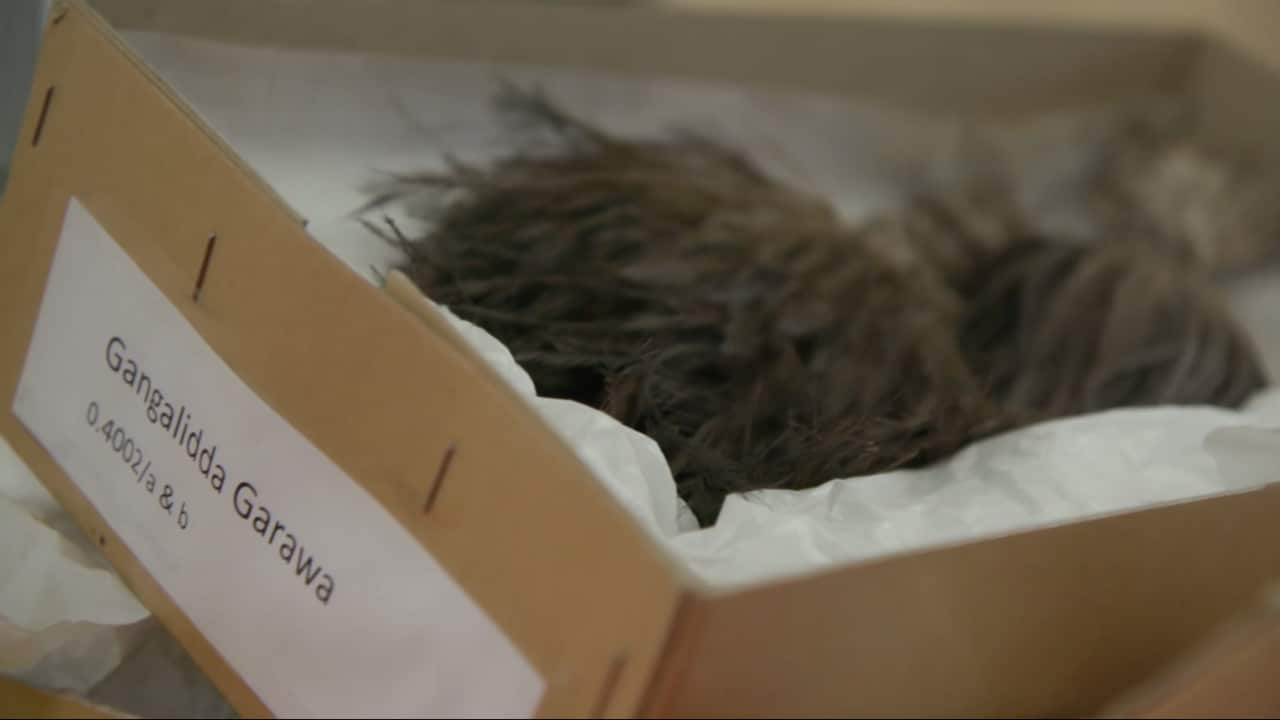More than 100 ancestral skeletal remains have been repatriated on Kaurna country in Adelaide’s North.
It is likely the world’s biggest mass repatriation of stolen and otherwise unearthed Indigenous ancestral skeletons.
A special smoking ceremony was held as the remains were returned to Country from the South Australian Museum.
Kaurna Elder Major ‘Moogy’ Sumner said this repatriation was unique in that it ensures the remains will not be disturbed again.
“This is about the first time this has ever happened, where our remains are honoured in this way,” he said. “When they are buried today, they’ll have part of their land on top of them to keep them, and they’ll know that.”
“When they are buried today, they’ll have part of their land on top of them to keep them, and they’ll know that.”

A member of the Black Death Motorcycle Club holding the remains. Source: Supplied: Douglas Smith
The remains were returned to the Wangayarta Smithfield Memorial Park, a purpose-built memorial site that will now become home to all Kaurna remains that are repatriated to country in the future.
“This is a first step forward, it’s knowing that we belong, and that we’ve actually been heard,” Kaurna Elder and repatriation officer Aunty Madge Wanganeed said.
“We’re going to bring our old people back, we’re going to do it respectfully, and we’re going to have a place of belonging – that’s what this is – it’s a place we can come further down the track and just be here, if we want to.”
The repatriation of First Nations remains from Australian museums has been ongoing for about three decades now. But Australian National University researcher Dr Lyndon Ormond-Parker said this particular model will ensure the remains are not disturbed again.
But Australian National University researcher Dr Lyndon Ormond-Parker said this particular model will ensure the remains are not disturbed again.

The skeletal remains individually wrapped on top of a smoking ceremony. Source: Supplied: Douglas Smith
“Many Aboriginal people have wished for such a burial site on their various countries, and I think it's very significant in terms of both the state legislation in South Australia, but also provides a roadmap for other states to look at carefully,” he said.
“It's a long history in South Australia of the museum collecting Aboriginal and Torres Strait Islander human remains, and the museum has been one of the last to really address the repatriation of human remains back to communities of origin.”
Some of the remains date back to the mid to late 1800s, and many are damaged or incomplete.
The South Australian Museum’s John Carty said the Kaurna community led the project to repatriate the remains.
“We faced the problem that Kaurna people were carrying – the burden of reburying their ancestors – and we were able to walk together to come up with a solution and build this place,” he said. “Before this project, I couldn’t really know just how much people were carrying and how difficult it was, and how slowly we have to do this process so that repatriation isn’t a further violence on people and a further stress, but is actually a healing process.”
“Before this project, I couldn’t really know just how much people were carrying and how difficult it was, and how slowly we have to do this process so that repatriation isn’t a further violence on people and a further stress, but is actually a healing process.”

The crowd gathers in the middle of the Wanga Yarta burial grounds. Source: Supplied: Douglas Smith
There are still about 500 Kaurna ancestral remains being stored at the Museum, that will eventually be buried at the same memorial.
There are about 4500 more ancestral remains of First Nations people in museums around the country.



